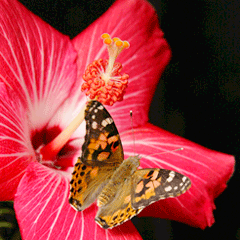My Cart
Your Shopping Cart is currently empty. Use Quick Order or Search to quickly add items to your order!

Painted lady butterflies are appropriate for all grade levels but are especially effective for grades K–8. They enable students to observe metamorphosis, from caterpillar to chrysalis to adult butterfly. Students can then compare the butterfly life cycle to those of other animals or investigate how temperature affects insect development time. General life science topics can be addressed as well, including how form fits function and what organisms need to survive.
Even if you have little or no experience teaching with live animals you will find these insects easy to use in the classroom
and rewarding for students of all ages. Our painted lady butterfly larvae provide the perfect introduction to the world of
butterflies. Larvae are shipped inside a clear, self-contained culture vessel, allowing students to observe and measure
caterpillar development.
Our Butterflies in the Classroom Kits give students the hands-on opportunity to set up a larva in its own
culture vessel. There is no food to mix; caterpillars simply eat the medium supplied in the culture vessel until they form
chrysalises. Students then hang the chrysalises in our new and improved
Carolina™ Butterfly Sanctuary and
watch for the butterflies to emerge.
Our Butterflies in the Classroom Kits come complete with everything you and your students need to raise
painted lady butterflies from larvae to adults in less than 30 days. Using our high-quality, exclusive
Carolina™ Butterfly Culture, you will get large, colorful, active butterflies.
Order your kit with the caterpillars and food, or if you prefer, order it and receive a prepaid coupon to request the
caterpillars at your convenience. This affordable, one-of-a-kind learning experience is hands-on fun for your students.
Its simple design leaves you with no worries, no messes, and best of all, money remaining in your budget.
Before and after your order, we offer the best professional support available. Our highly trained experts are here to
answer all of your questions and provide any assistance you may need—plus all of our butterfly teaching materials are
unconditionally guaranteed. As easy as
Butterflies in the Classroom Kits are to use; they are even easier
to order.